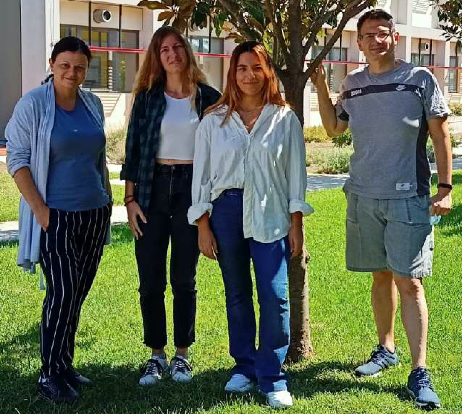HYSUMO is a research project supported by the Hellenic Foundation for Research and Innovation (H.F.R.I.) under the “First Call for H.F.R.I. Research Projects to support Faculty members and Researchers and the procurement of high-cost research equipment grant” (Project Number: 1460).
Research Project:
Full Title:
Investigation of the role of sumoylated proteins in the adaptation of cells to hypoxia.
P.I:
Georgia Chachami, Lecturer of Cellular Biochemistry, Laboratory of Biochemistry,
Scientific area:
Life Sciences (Medicine and Health sciences)
Host Organization:
Faculty of Medicine, University of Thessaly, Greece
Duration and Budget:
36 months, 158400 €
Management body:
Special Account for Research Grants University of Thessaly
Research Team members:
Georgia Chachami, PI. Assistant Prof.
Ilias Mylonis, Assistant Prof.
Chrysa Fillipopoulou, PhD candidate
Amalia Kanoura, PhD candidate

Short Description:
- Hypoxia occurs in pathological conditions such as cancer due to the imbalance between oxygen supply and consumption by the highly proliferative cancer cells. Hypoxia Inducible Factors (HIFs) are critical molecular mediators of the physiological response to hypoxia and regulate multiple steps of carcinogenesis including tumor progression and metastasis.
Recent data support that sumoylation of proteins is required for the activation of the response to hypoxia and the signaling cascade. Sumoylation is the covalent attachment of the Small Ubiquitin-related Modifier (SUMO) to proteins and occurs in a variety of substrates in order to regulate their function.
By using a newly established endogenous SUMO-immunoprecipitation (IP) method in combination with quantitative mass spectrometry (SILAC) in HeLa cells, we have identified proteins that exhibit significantly altered sumoylation status under hypoxia, without concomitant changes in their expression levels. Our aim is the characterization of the role of sumoylation in several factors discovered by the SILAC-IP screen and the clarification of their significance for the cellular response to hypoxia


